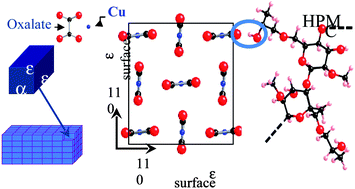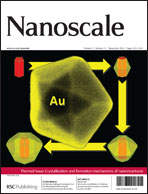Control of morphology and nanostructure of copper and cobalt oxalates: Effect of complexing ions, polymeric additives and molecular weight†
Abstract
Precipitated oxalates are often nanostructured and can be used as precursors for nanostructured oxides for different applications. The modification of the particle shape and

- This article is part of the themed collection: Crystallization and Formation Mechanisms of Nanostructures

 Please wait while we load your content...
Please wait while we load your content...